“Of course, there are significant differences between the two writers: Klein imagines that the problem with the world is too much focus on capitalism at the expense of progressive values and social welfare. Beck, on the other hand, loves capitalism, and thinks it can be redeemed if only power would be taken out of the hands of wealthy corporations and their political allies, and returned to individual citizens. But the dystopia they fear is very similar, as is their paranoia about the intentions of our economic and political elites, and their disgust at seeing “stimulus” funds used to fill the coffers of fat-cat bankers.”
Pundits make a big deal about the “polarization” between left and right. But in many cases, this polarization is just a superficial symptom of people using different language to express the same underlying frustrations about the powerlessness we feel in a modern, capitalist, heavily bureaucratized, post-industrial society. ( Jonathan Kay )
Almost eight hundred years ago to very competing visions in Italy, dropped the gauntlet and engaged in warfare of varying intensities that lasted almost three hundred years.Like the “new revolutions” bandied and hawked by pundits from both sides of the Lincoln Memorial, in Renaissance Italy a revolution in pictorial representation through the use of the new idea of geometric perspective….

"The top 1% of wealth holders own 41% of all the assets in the country while the bottom 40% own absolutely nothing. Meanwhile, workers are saddled with $12 trillion of national debt, an effective indentured servitude that will bind them to their corporate masters for the rest of their lives. This is the working definition of feudalism,..."
And like America, they were enviously prosperous. Since the 13th century the main rift was between the supporters of the Papacy (Guelfi – Guelphs) and of the Empire (Ghibellini – Ghibelines); for decades Florence was torn apart by civil wars until the strongest Ghibellini families were defeated and exiled But quite soon the Guelfi themselves split into two warring factions and the domestic struggles went on. In the meantime, the city became richer and more populated and fought neighboring towns for control of Tuscany: the toughest enemies were Arezzo, Pistoia, Pisa on the coast and above all Siena. Florence was overwhelmingly ‘Guelfa’ while these rival towns were mainly ‘Ghibelline’, so they supported the Ghibellini partisans within Florence.
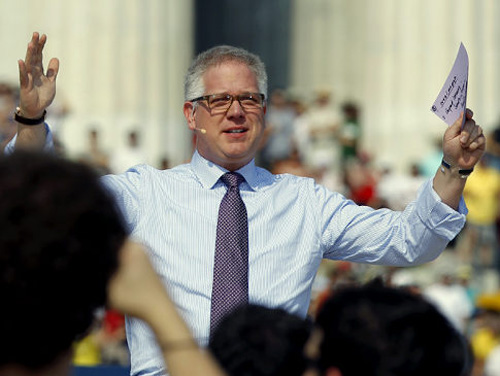
"Yes, that Glenn Beck — the right-wing FOX News host who weeps on cue, accuses Barack Obama of being an anti-white hatemonger, and regularly invokes the specter of Adolf Hitler in describing efforts to reform American health care. It’s hard to find someone more removed from Klein on the left-right spectrum. Yet here he is, in his newly published novel, hewing so closely to Klein’s phobic Shock Doctrine thesis that she might consider asking him for royalties. Read more: http://fullcomment.nationalpost.com"
In 1260, after the big defeat of Montaperti, Florence faced destruction but at the end succeeded in destroying the power of Siena. In 1289 Arezzo was also conquered in a battle at Campaldino, in which the famous Dante Alighieri fought. Dante was a poet and a writer and took part passionately in the political life of the city until his faction was defeated and he was exiled from Florence. In his masterpiece, “The Divine Comedy”, we find many characters, events and feuds of these dangerous times.
Like America today, it was an age of conflicts not only outside, but also within the city: between original citizens and families immigrating from the countryside, the notorious ‘contado’; between nobles and traders; between rich and poor; between employers and employees . In the meantime a powerful and clever family of bankers was increasing its power and wealth until they became the effective rulers of Firenze in 1434: The Medici. The most important member of this famous dynasty was ‘Lorenzo il Magnifico’ who ruled Tuscany for half a century and was the first Italian prince of his age: the age of the Renaissance which he made blossom.
Update 1:10 p.m. Louis C. Fields, 59, of Baltimore, said he supported the right Beck and the civil rights group to have rallies on the anniversary of King’s speech and he planned to go to both. ”King’s speech is what paved the way for Sharpton, Beck and Palin to be here,” Fields said. “I disagree with some of the Tea Party’s slogans. It’s very misleading, the slogan, ‘Take our country back.’ I think those types of words lend themselves to negative connotations. Who are you taking the country back from and when did they take it?” He added: “Most of the people I see are white but that doesn’t mean they are racist.” Fields questioned why it seemed like a “white only movement.” “It seems they don’t have a message that attracts people outside of the Caucasain race.”
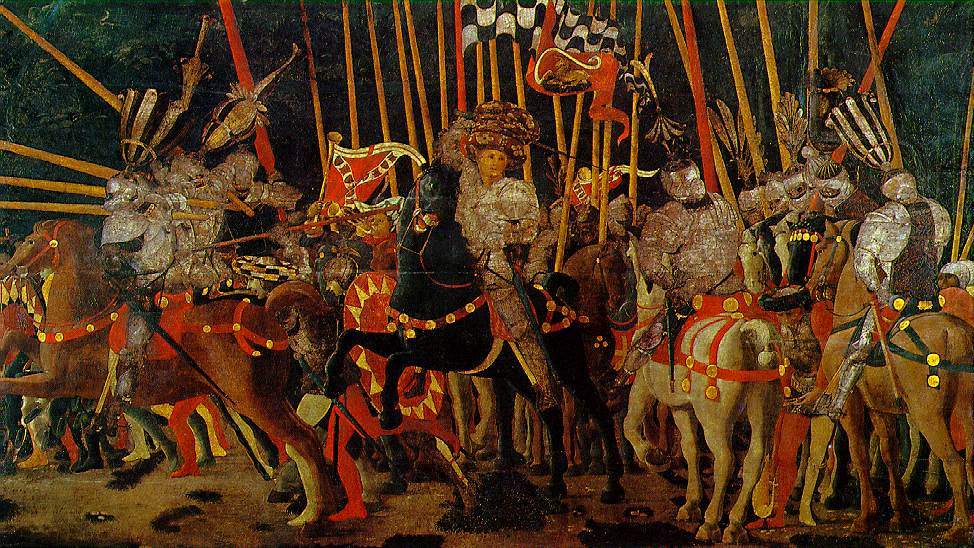
Uccello, Paolo (properly Paolo di Dono) (1396-97 -- 1475). Florentine painter, one of the most distinctive artists of the early Renaissance. The Battle of San Romano: the Counter-Attack by Micheletto da Cotignola c. 1440; Tempera on wood, 180 x 316 cm; Musée du Louvre, Paris
…Paolo Uccello’s three part painting is a study of perspective; in painting an military honor. Squadrons of cavalry are trampling through a spring landscape. The sky is a mere rim and the earth presses up to it. The space has the muscular run and rhythmof Tuscan fields and, though flattened somewhat
d airless, it is saturated in color: black, white, grey; russet and improbable pink horsehide; a sharp alteration of red and white lances, blue and gold harnesses. Metal discs on the knights armor repeat and parody the elliptical form of white and gold roses in a hedge row. The horse’s hoofs crash mutely, as if shod with felt. It was a measured battle that Paolo Uccello painted- the three panels that are known collectively as the “Rout of San Romano”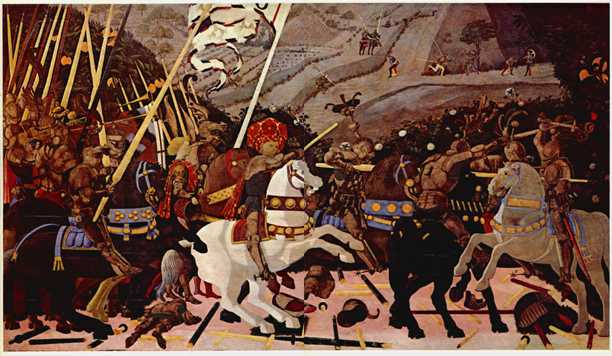
"Both horses and men look a little wooden, almost like toys, and the whole gay picture seems very remote from the reality of war. The painter was so fascinated by the new possibilities of his art that he did everything to make his figures stand out in space as if they were carved and not painted. Uccello obviously took great pains to represent the various' pieces of armor which litter the ground in correct foreshortening. His greatest pride was probably the figure of the fallen warrior lying on the ground, the foreshortened representation of which must have been most difficult. No such figure had been painted before and, though it looks rather too small in relation to the other figures, we can imagine what a stir it must have caused. We find traces all over the picture of the interest which Uccello took in perspective and of the spell it exerted over his mind. Even the broken lances lying on the ground are so arranged that they point towards their common 'vanishing point'. It is this near mathematical arrangement which is partly responsible for the artificial appearance of the stage on which the battle seems to take place."
“The rhetoric of partisan competition has morphed into that of cultural animosity. The West is headed for a divorce and by all indications it is imminent and it will be messy. I favor the divorce, because the alternative is civil war, akin to the West Bank or Northern Ireland. We are really much closer to that than people appreciate.” ( Michael Ferguson, Polymathica )
More than a hundred twenty-five years ago, the sections were apportioned among London, Paris and Florence. England has the beginning of the battle, France the middle, and Italy the end. It, or rather its parts, is possibly the most famous image of warfare to survive in a complete state from the early Italian Renaissance: chivalric, orderly and brutal.

"Palin honored military members in her speech. She likened the rally participants to the civil rights activists who came to the National Mall to hear King's historic speech. She said the same spirit that helped civil rights activists overcome oppression, discrimination and violence would help this group as well."
Uccello’s “Rout of San Romano” commemorates what would otherwise be an obscure incident in the long wars between Siena and Florence. In the delicate unstable balance of diplomatic forces inside fifteenth century Tuscany, Florence was dangerously isolated. The Sfozar tyrants in Milan had exerted a steady expansionist pressure and finally alied themselves with Siena, Florence’s old enemy. In April, 1432, the Sienese army thrust into Florentine territory, looting villages, burnig crops, and capturing several fortresses.

"What I mean is that perspective is introduced as an experiment. Broken lances are laid out on the floor as to the rules of perspective, slain horses are shown from their underbelly which is not easy to draw, but these paintings are constructed rather than seen and its elements arranged to depict the dynamics of a clash, but not its realistic experience. If you just look at it from afar, all you see is vectors, lances, banners, legs that point in directions that almost alone describe the impact; you wouldn’t need to see the details."
They were led by an able “condottiere” or mercenary warlord, Bernardino della Carda. As the spring and the fighting wore on, the Florentines changed commanders. Their general, Cotignola, was demoted to second-in-command and hisplace taken by a man who was destined to be celebrated as one of the most famous military heroes of fifteenth century Italy, Niccolo Mauricci da Tolentino.
On June 1, 1432, Tolentino was leading a pursuit squadrom of about twenty horsemen down the Arno valley, tailing Della Carda. His men were ambushed by a much larger force of Sienese. The fight went on for eight hours, a bitter and exhausting struggle whose discomfort can only be imagined; horsemen sweating and stifling under the late spring heat in their wool lined chain mail and hinged metal greaves, blundering at their opponents with thick lance and iron mace. Finally, Cotignola arrived with some relief squadrons, foeded the Arno and attacked the weary Sienese who then fled. Such was the rout of San Romano.
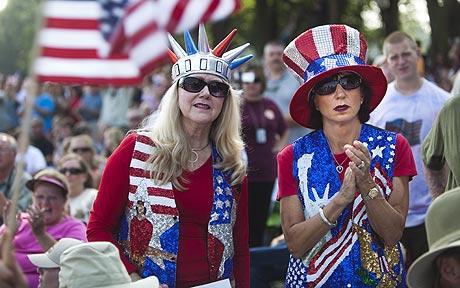
"Rev Al Sharpton, the fiery black leader who has engendered his own share of controversy, organised a rival rally a few miles away that culminated in a march to the future site of a King Memorial, within shouting distance of the Beck rally. There was a heavy police and security presence and as the two rallies ended, on an almost perfect Washington summer's day, there were no reports of clashes despite earlier fears of conflict. The Beck rally was conducted along strictly patriotic and religious lines with speakers studiously avoiding any mention of the rival rally. But speakers at the much smaller Sharpton rally directly attacked the politics of Beck and Palin and the growing Tea Party political movement, claiming they were out to overturn civil rights victories."
It had not been a large or even a politically decisive battle, but it was a striking instance of Florentine “virtu” , that untranslatable concept, so often invoked by Machiavelli, that had to do with individual initiative, astuteness, and prowess. It was the basis for the esteem in which Florence came to hold its new military hero, Niccolo da Tolentino. “The greatest philosopher yields to the greatest captain,” proclaimed Leonardo Bruni in a eulogy to Niccolo the next year, 1433. “Plato is not to be compared with Alexander, nor Aristotle with Ceasar.”
The small size of the fray at San Romano did not minimize its fame; and only served as pretext for a vast projection of myth creation that magnified ideas preserved through the Italian “quattrocento” about the nature and uses of military “virtu” . It was symbolic and deeply affected by a tradition of formal combat; the honor and pageantry of medieval lists. It is not true, as some historians have suggested, that the “condottiere” system turned war into a bloodless game of wheeling, trumpeting and banner flourishing; of course men were killed, and horribly, too. Neverthless, Renaissance warfare was still a matter to be conducted by paid and qualified rival experts, rather than a disaster involving the whole citizenry.
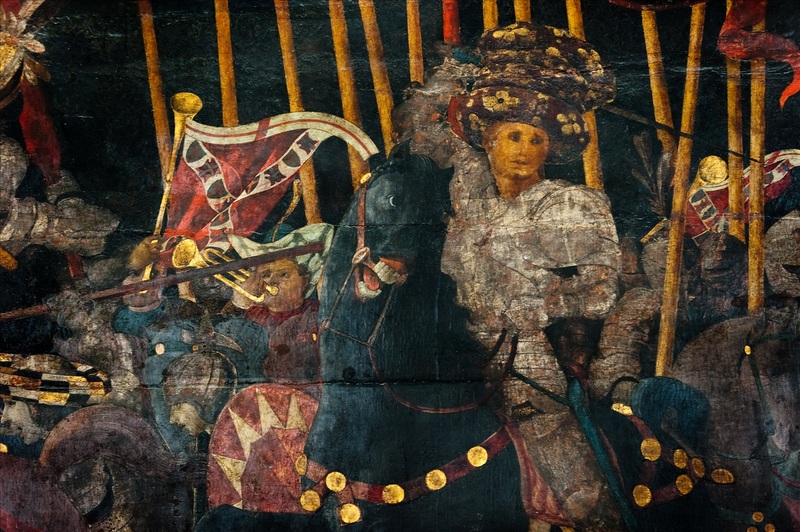
Almost everything is ornamental. Even the horses, given furious life by Uccello, appear to be as much the real combattants as the riders.
“We are now at the point past reconciliation. The invective is hurled with impunity. The other side is now not only stupid, selfish and hateful, their course is ruinous. It is simply not true….”
The Traditional Western free enterprise vision can be made to work. The Progressive, Humanist, Collectivist vision can be made to work. Both will require revision, but they are inherent viable. However, they are mutually exclusive. There is no compromise that is viable. Abortion can’t be both murder and an inalienable right. Yelling at the other side and calling them names does not solve that basic dilemma. So, we are headed for a divorce. If we are lucky. If either the ‘Left’ or the ‘Right’ continues to think it will somehow achieve hegemony, the situation will not be resolved and eventually, more likely sooner rather than later, the disagreement will become violent. ( Michael Ferguson, Polymathica )
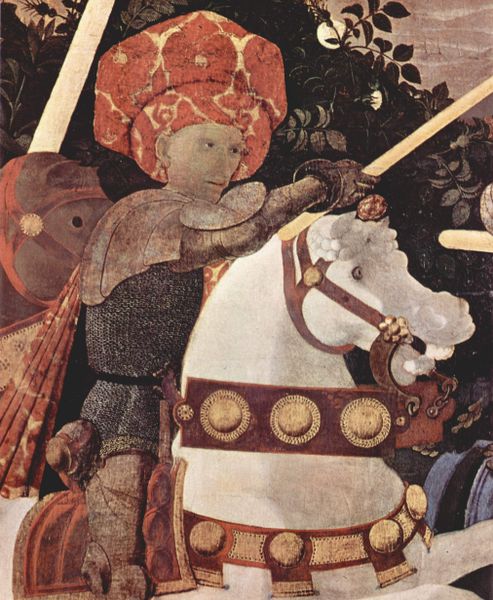
Niccola de Tolentino, magnificently hatted commander of the Florentine detachment, freezes in full action in this detail from the London panel. Out of the chaos of battle Uccello created a carefully ordered pattern of broken lances, fallen armor, and overlapping horseflesh.
…Hence the medival view of warfare enjoyed a long life beside the Arno. After all, the smaller the battle, the more visible the “virtu” . Not much is known about the early history of the painting; it was first mentioned in an inventory made in 1492 of Lorenzo the Magnificent’s possessions in the Palazzo Medici. The panels, were in fact, part of the decoration of Lorenzo’s bedroom; so it is likely his father, Cosimo, commissioned the painting.
One must visualize the paintings as a set. They do not read as a straight narrative from left to right, like a comic strip; but rather, the story folds inwards toward the center. The last stage of the battle is the middle painting, the Uffizi’s “Unhorsing of Bernardino della Carda” So, we are not dealing with storytelling conventions of earlier Florentine art, which, in the medieval manner, represented different actions happening serially within the same space, the same landscape. In Uccello’s cycle the landscape shifts with time- as in real life. The paintings, as originally hung, may have been separated by pilasters ad thus never intended by Uccello to mesh exactly. But all the same, they are a set and were conceived as such. Together, as Lorenzo would have seem them on his wall, they disclose innumerable echoes , overlaps, and subtle tricks of composition that tighten them into a formal, as well as a narrative unit.
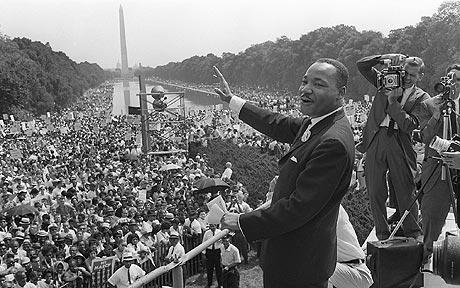
"Civil rights leaders condemned the rally as an attempt to "hijack" the anniversary of Martin Luther King's iconic "I Have A Dream" speech made exactly 47 years ago from the steps of the Lincoln Memorial. Mr Beck claimed it was "pure coincidence" that his rally – also centred on the Lincoln Memorial – just happened to fall on the anniversary of what many consider to be the greatest of all civil rights speeches."
In the center is the climax, the axis of the painting’s formal symmetry: Della Carda, the enemy captain, speared and falling back across the rump of his charger like a scarab on a pin. The thudding encounter of these pressures is resisted by a wonderfully unobtrusive formal device- the head of Della Carda’s horse forms the apex of a pyramid pinned at its base by the two fallen horses.
But within the centered , anchored symmetry of the overall composition, there are many echoes. Some, like the fallen horses at the center, are immediately evident, others are less so.Thus, Niccolo’s white horse, charging forward from a mass of dark steeds, is repeated in negative fashion in the right-hand panel where Micheletto’s black mount likewise springs away from the cluster of light colored cavalry.
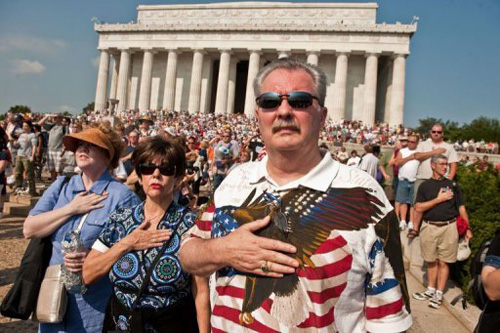
Jonathan Kay:"And now, three years later, comes the novel version of Klein’s Shock Doctrine vision. In The Overton Window, readers meet Arthur Gardner, an über-powerful public-relations magnate whom the aforementioned government officials, Wall Street tycoons and multinationals corporations have hired to sow the seeds of one-world corporate tyranny. Gardner’s plan: blow up a nuclear bomb in Las Vegas and then, as a shocked America reels under the mushroom cloud, tear up the U.S. constitution, end free elections, and hand over all power to America’s corrupt elites. It’s the ultimate shock-doctrine blueprint. And Gardner’s evil knows no bounds: In a final symbolic scene, the man even tortures his own stubbornly free-spirited son using — what else? — electroshock treatment. But here’s the odd thing: Klein didn’t write The Overton Window. The actual author was Glenn Beck. Read more: http://fullcomment.nationalpost.com/2010/07/19/
But Uccello used so many positive-negative reversals that desription bogs down in manifold details. Indeed, “The Rout of San Romano” is one of the most extraordinary and complex feats of organization ever brought to completion by a painter, in or out of the Italian Renaissance. No sbject is more inherently confused than a battle scene, but few “quattrocento” paintings on this scale possess so strict a lucidity. What sort of mind could generate such patterns, such mysterious coherences.
…Vasari wrote that Uccello was obsessed with problems of perspective; this is conveyed in his use of forms reduced to volumes, foreshortening and mazzocchi (the multi-faceted wooden hoops covered with cloth forming the headgear of the central figure here), a veritable virtuoso exercise for painters. This exploration of geometrical, almost abstract forms fascinated the Surrealists and Cubists….
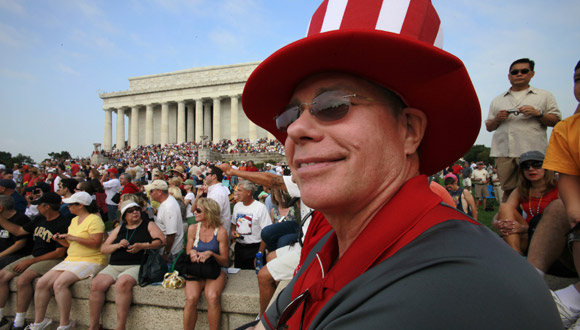
'America today begins to turn back to God,' the cable commentator tells a crowd of conservatives as he kicks off a rally on the 47th anniversary of Martin Luther King's 'I Have a Dream' speech.
“In Klein’s case, she sees the worker as the basic building block of society: In The Shock Doctrine, as in her other works, the great heroes tend to be activists valiantly attempting to organize small groups of laborers in humane collectives, but always being held down by a system that allows power to be monopolized by corporations and their public minions. Beck’s hero is the taxpayer, the entrepreneur, the honest tradesman trying to make a buck — but in the end, he is shown by the teary Beck to suffer much the same abuse. Different protagonists. Same villain.
Klein and Beck are not alone in coming full circle from opposite edges of the political spectrum. In the last few months, I have attended both Tea Party rallies in Tennessee and G20 protests in Toronto. And I was struck by how similar was the anti-elite tone of the slogans and propaganda at both events: Whatever their differences regarding the virtues of capitalism, both groups are convinced that Barack Obama and the rest of the G20 are conspiring to impoverish the ordinary man and woman on the street, and centralize power for the benefit of well-connected corporate cronies.” ( Jonathan Kay )
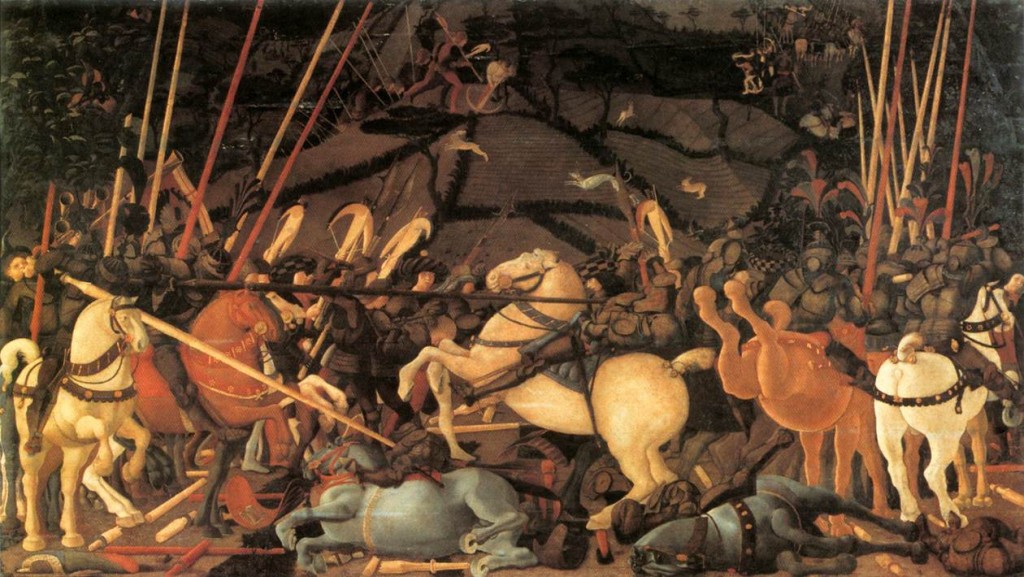
"This is the central panel of the three paintings representing the battle won by Florence against Siena allied with Visconti, the ruling family of Milan. It took place on June 1st 1432 in San Romano, half way between Florence and Pisa. The picture shows the conclusive combat between the captains of the two armies: Niccolò da Tolentino unseating Bernardino della Ciarda. Uccello's obsession with displaying his mastery of perspective (such as the long white and red lances or the exceptional horses that have rolled over on the ground) and the dramatic nature of the clash between the knights combine with his almost magical story telling. This is underpinned by the use of unreal colours and light as if describing some fabulous tale of chivalrous adventure."
…To mention perspective, however, is to encounter the core of Uccello’s art. He did not in fact , invent this method of depicting a measured, objective, three dimensional space on a two dimensional surface. Strict geometric perspective, the “lawful construction” by which figures and objects could be made to diminish in size in exact proportion to their apparent distance from the eye, was invented- or rediscovered; by the painter sculptor , and architect Filippo Brunelleschi early in the fifteenth century.
Brunelleschi’s “focused” system , that is, one in which the vanishing point is only approximated, was given a firm theoretical base by Leon Battista Alberti. Henceforth, a composition could be founded on a triangle, its base at the lower edge of the painting, its apex representing the vanishing point. A perfect triangular composition was, however, the exception; most artists intersected the triangle with a line limiting the field of vision, transforming the triangle into a quadrilateral form, as the hedge of roses does in the London panel of Uccello’s ”Rout”. In any event, by the time Alberti elaborated this method in his “Della Pittura” in 1435, it had already permeated the artistic practice of Florence. Nobody, least of all Uccello, could be immune to such a revolutionary attack on the flat Gothic picture frame.







 COMMENTS
COMMENTS



